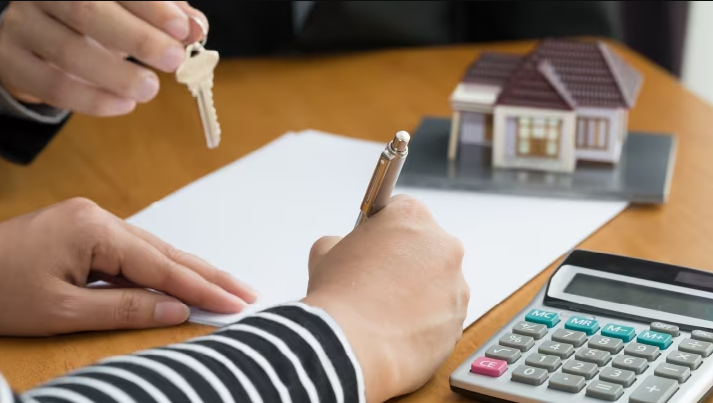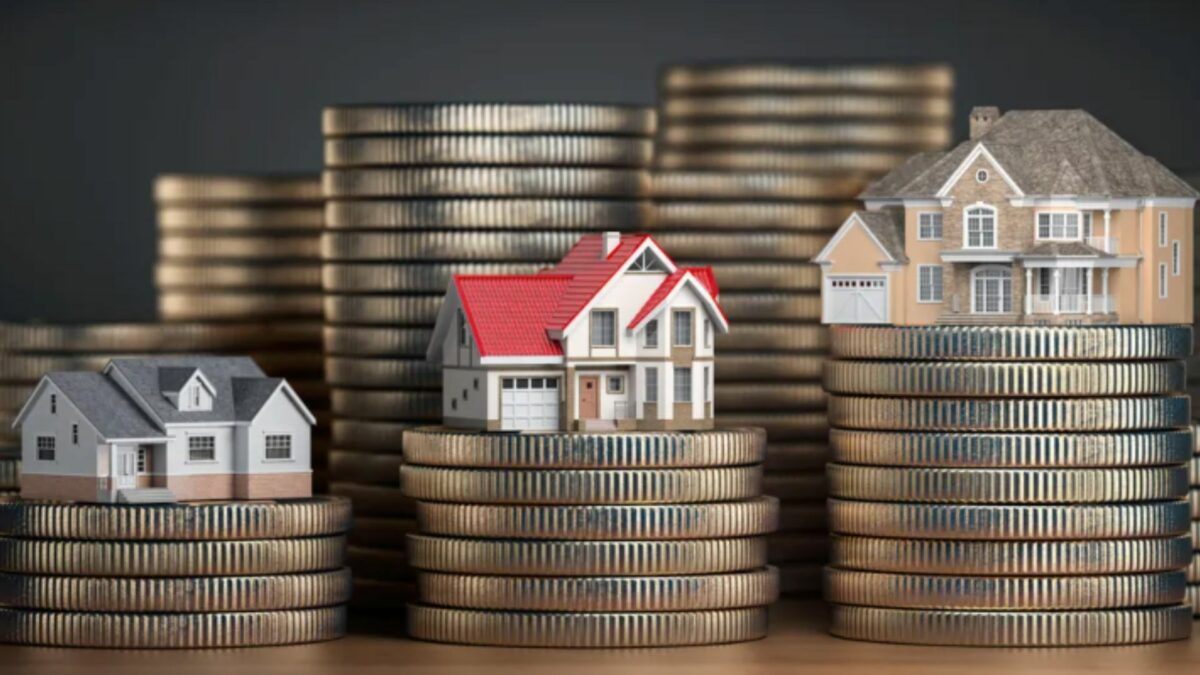This article is part of a series on personal finance during the coronavirus pandemic. Please check out the Coronavirus and Your Finances Series (link will open in a new window).
Note: On May 1, 2020, the first domino of my forewarning of six weeks ago happened, as Wells Fargo and JP Morgan Chase announced that they were suspending applications for HELOCs. If you decide to take action, do it now, not later.
It is only the poor who pay cash, and that not from virtue, but because they are refused credit.
–Anatole France
I founded a private equity group before hitting our FIRE (financial independence retire early) target. Since the COVID-19 (coronavirus) pandemic outbreak, we’ve had a lot of board calls with our CEOs to talk about the actions they should take to weather the economic and financial storm that we think is likely to come.
Every single one of them has maxed out their lines of credit and drawn them. None of them had any balance on those lines of credit before they made the full draw. They went from $0 balance on their lines of credit to max balances overnight, and they put all of that money in the bank to act as their emergency funds in case their businesses had wildly negative swings.
Why did we recommend this?
In the Great Recession, credit standards tightened 80% for small businesses. Even some guy named Bernanke commented on line of credit drawdowns by business borrowers during the Great Recession.
Simply put, we didn’t want to have the lines of credit as a safety net only to find that, a couple of months into the pandemic, the banks had yanked our safety nets out from underneath us. We were proactive to draw on the available facilities while the facilities were still there.
After all, as Bob Hope once said, “A bank is a place that will lend you money if you can prove that you don’t need it.”
Our companies’ profit and loss statements and balance sheets were, by and large, strong, and the banks agreed that they were creditworthy. Who knows what they’ll look like in two months? If the ship has righted and we’ve suppressed the pandemic, then we’ll pay back the lines of credit, and the interest that we paid will be cheap insurance.
You may not have a business, but, if you’re like 128.58 million U.S. households, you do have a house.
Furthermore, if you’ve been diligent and adhered to the “no such thing as good debt” principle, then you’re one of those homeowners who contributes to the $6.2 trillion of untapped home equity (as of the beginning of 2020).
If you believe, like 51% of economists surveyed in early March, 2020 by the London School of Economics, that the coronavirus pandemic will cause a recession, then it may not be unreasonable to expect a tightening of consumer credit like there was during the Great Recession.
Furthermore, as we explained in “Asymmetric Outcomes: Why You Shouldn’t Invest Your COVID-19 Government Stimulus Check,” some economists are expecting a 30% unemployment rate during and shortly after the pandemic.
Basically, compared to status quo ante, that means that 1 in 4 people who currently has a job will lose their job.
If you’re one of those who loses their jobs during the novel coronavirus pandemic, then you’re going to need two things to get back on your feet:
- Time. It may take a while for the economy to recover. Your job and your employer may not exist when this is done. It’ll take time for the economy to shift and adapt and get running again. In the meantime, you may be without an income.
- Cash. While there may be temporary halts to calling bills due like your mortgage, utilities, and other debts, eventually, those restrictions will be lifted, and the lenders will want their money. In the meantime, you still need to put food on the table and pay for necessities.
So, if and only if you meet the following two conditions, you might want to consider drawing down your entire HELOC and putting it into a solid money market fund:
- You do not have a robust emergency fund, and
- You already have a mortgage. If you lose your job, have a mortgage, and have no cash, you’re going to get foreclosed on anyway. Remember, we’re trying to buy time and stockpile cash in case of you losing your job. If you don’t have a mortgage, then you don’t want to jeopardize your housing if something bad happens to you financially. In other words, drawing on a HELOC doesn’t make an existing problem worse, but borrowing against an otherwise unencumbered house could create a big problem for you if you can’t pay it off.
If and only if those two conditions are true, then it may be time to put some serious thinking into maxing out your HELOC.
If You Are Going to Draw on Credit During the COVID-19 Pandemic, Why Draw a HELOC Instead of Getting a Cash Advance on Your Credit Card?

There are four reasons for choosing to max out a HELOC rather than getting a cash advance on a credit card:
- It’s cheaper. Current average HELOC rates, as of March 24, 2020 are at 6.15%. If your credit score is good, it may be lower. For example, Bank of America’s lowest APR is 2.74%. Let’s assume that you need the HELOC for 6 months and then you feel like you’re back to your previous level of certainty with regard to your job. Assuming you had a lender who has no or a waived origination fee (and no prepayment penalty), then you’ll pay 3.075% off of what you borrowed. Compared that to a cash advance, where you will probably pay 3% up front, and then, on average a 23.68% cash advance interest rate, meaning that you’ll pay 11.84% of the loan over the course of the six months.
- You have more time to pay back, so your payments are lower if you do lose your job and need the money. Most HELOCs have a 10-20 year repayment period, whereas most credit cards have a 5 year amortization schedule based on the minimum payment. Using the average interest rates cited above and a $25,000 loan, that’s the difference between a $279.44 payment for the HELOC and a $714.56 payment for the credit card (not to mention your cash advance fee).
- More access to credit. Most credit cards will not let you max out your credit card in a cash advance. They have cash advance limits. It’s almost certain that your HELOC offers you more credit than your credit cards will.
- You may lose access to that credit if you lose your job. Not only might banks start to draw back on their previously authorized lines, but they may also want income verification. If you have no job, you can’t verify income.
Let’s say that you max out a $100,000 HELOC with no up front fees and no prepayment penalties, and you pay the average HELOC interest rate of 6.15%. Furthermore, let’s say that you put that money in a Capital One 360 account, which, as of March 24, 2020, has a 1.5% interest rate. Your effective interest rate on that borrowing is 4.65% annually.
Let’s also say that you go six months, don’t lose your job, and feel good enough to repay the debt.
How much did that insurance cost you?
$6,261.78.
If you do lose your job, though, you now have $100,000 in cash sitting in the bank to get you through your unemployment period without losing your house.
Yes, you’ll have to really tighten the belt to repay everything when you get your job back, but it’s better than losing your house.
If you can’t find a job in that time, well, unfortunately, you would have lost your house anyway.
Would you pay that much for insurance for losing your job over the next six months during the coronavirus pandemic? Let’s talk about it in the comments below!
Author Profile
- John Davis is a nationally recognized expert on credit reporting, credit scoring, and identity theft. He has written four books about his expertise in the field and has been featured extensively in numerous media outlets such as The Wall Street Journal, The Washington Post, CNN, CBS News, CNBC, Fox Business, and many more. With over 20 years of experience helping consumers understand their credit and identity protection rights, John is passionate about empowering people to take control of their finances. He works with financial institutions to develop consumer-friendly policies that promote financial literacy and responsible borrowing habits.
Latest entries
 Low Income GrantsSeptember 25, 2023How to Get a Free Government Phone: A Step-by-Step Guide
Low Income GrantsSeptember 25, 2023How to Get a Free Government Phone: A Step-by-Step Guide Low Income GrantsSeptember 25, 2023Dental Charities That Help With Dental Costs
Low Income GrantsSeptember 25, 2023Dental Charities That Help With Dental Costs Low Income GrantsSeptember 25, 2023Low-Cost Hearing Aids for Seniors: A Comprehensive Guide
Low Income GrantsSeptember 25, 2023Low-Cost Hearing Aids for Seniors: A Comprehensive Guide Low Income GrantsSeptember 25, 2023Second Chance Apartments that Accept Evictions: A Comprehensive Guide
Low Income GrantsSeptember 25, 2023Second Chance Apartments that Accept Evictions: A Comprehensive Guide

